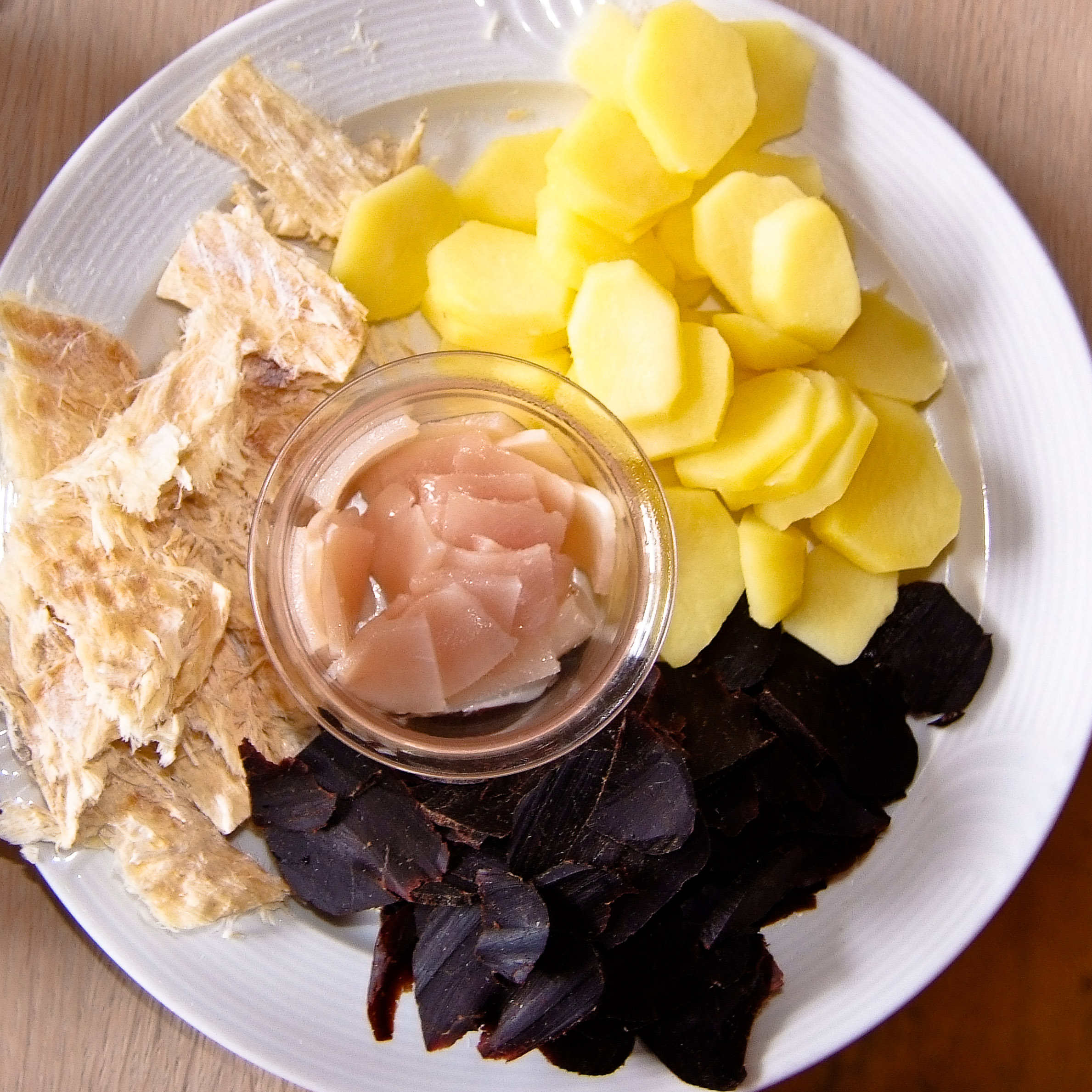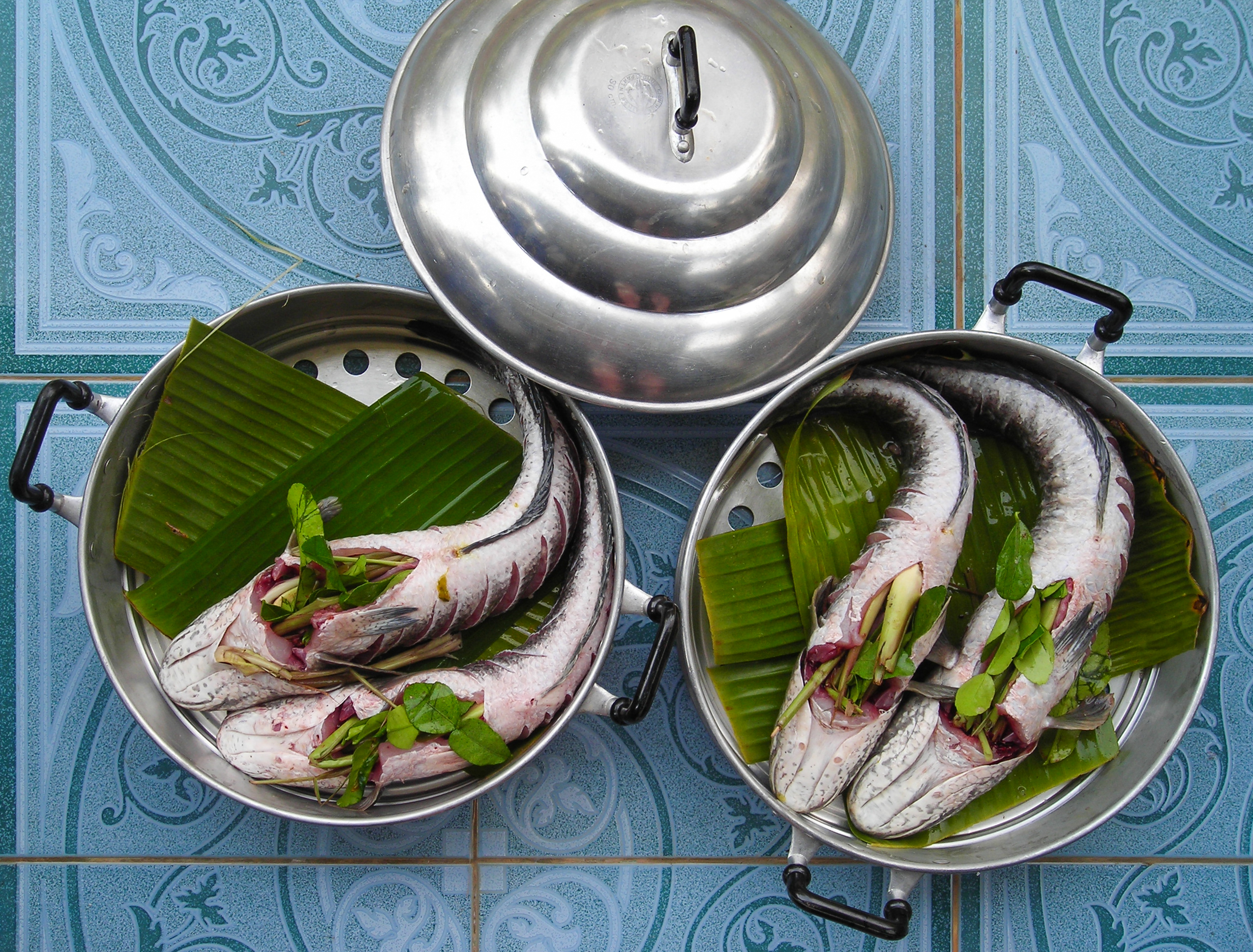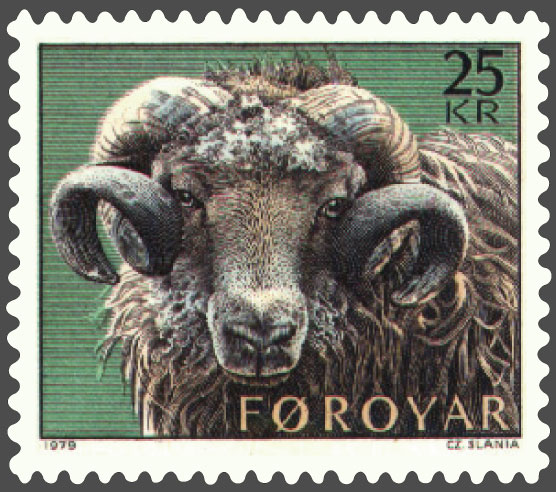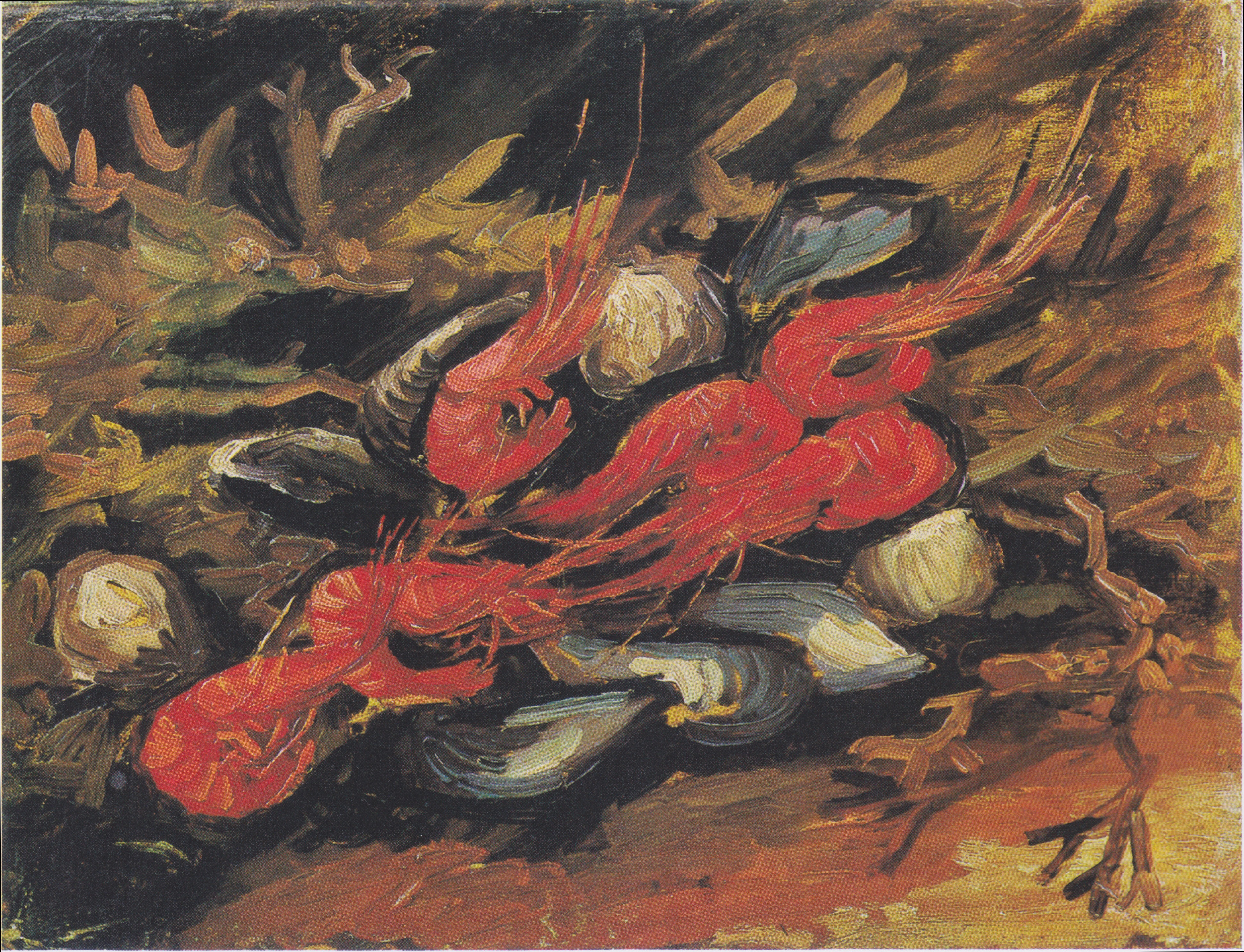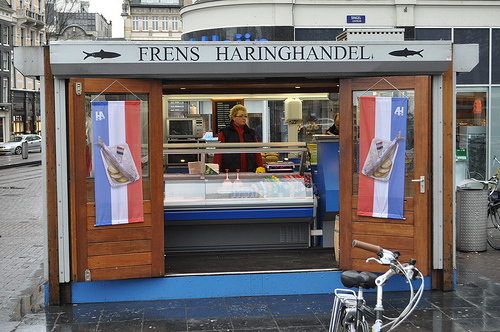|
Faroese Cuisine
Important parts of Faroese cuisine are lamb and also fish owing to proximity to the sea. Traditional foods from the Faroe Islands include skerpikjøt (a type of dried mutton), seafood, whale meat, blubber, garnatálg, Atlantic puffins, potatoes, and few fresh vegetables. Much of the taste of this traditional country food is determined by the food preservation methods used; brine, drying, and the maturing of meat and fish, called ''ræstkjøt'' and ''ræstur fiskur''. Animal products dominate Faroese cuisine. Popular taste has developed, however, to become closer to the European norm, and consumption of vegetables has greatly increased in recent decades while consumption of fish has diminished. Fresh and ''ræst'' lamb meat remains very popular while traditional meat products, such as various types of sausages, have lost much of their appeal with younger generations. Types of food Fish Fish dishes in the Faroe Islands are caught in the waters of the North Atlantic Ocean. ... [...More Info...] [...Related Items...] OR: [Wikipedia] [Google] [Baidu] |
Skerpikjøt (2)
Skerpikjøt (), a type of wind-dried Lamb and mutton, mutton, is a common food of the Faroe Islands.Jóan Pauli Joensen, "Færøsk madkultur: En oversigt" , Granskingar ráðið, The Faroese Research Council. Retrieved 21 December 2012. Production The mutton, usually in the form of Shank (meat), shanks or legs (''kjógv'' or ''bógv'' in Faroese, depending on which leg it is), is allowed to hang in a so-called ''hjallur'', a drying shed ventilated by the wind, for five to nine months, with the process beginning in the colder fall months between September and October. It has a very strong smell, which may upset those who are not accustomed to it. The hanging process covers three stages, or ''hjeldene.'' Each causing the meat to have different consistencies, smells and tastes. * Th ...[...More Info...] [...Related Items...] OR: [Wikipedia] [Google] [Baidu] |
Fish As Food
Many species of fish are caught by humans and consumed as food in virtually all regions around the world. Their meat has been an important dietary source of protein and other nutrients in the human diet. The English language does not have a special culinary name for food prepared from fish like with other animals (as with '' pig'' vs. ''pork''), or as in other languages (such as Spanish '' pez'' vs. '' pescado''). In culinary and fishery contexts, ''fish'' may include so-called shellfish such as molluscs, crustaceans, and echinoderms; but, more expansively, ''seafood'' covers both fish and other marine life used as food. Since 1961, the average annual increase in global apparent food fish consumption (3.2 percent) has outpaced population growth (1.6 percent) and exceeded the increase in consumption of meat from all terrestrial animals except poultry (4.9 percent), both combined (2.8 percent) and individually (bovine, ovine, porcine, et cetera). In ''per capita'' terms, f ... [...More Info...] [...Related Items...] OR: [Wikipedia] [Google] [Baidu] |
Meze
''Meze'' (also spelled ''mezze'' or ''mezé'') (, ) is a selection of small dishes served as appetizers in Eastern Mediterranean cuisines. It is similar to Spanish cuisine, Spanish tapas and Italian cuisine, Italian Antipasto, antipasti. A ''meze'' may be served as a part of a multi-course meal or form a meal in itself. ''Meze'' are often served with spirits such as ''Arak (drink), arak, rakia, Rakı, raki, Oghi (drink), oghi, ouzo,'' or ''grappa'' at meyhane and ouzeri or at regular restaurants. The word meze, used in all the cuisines of the former Ottoman Empire, borrowed from Turkish meze meaning 'appetizer', which in turn had borrowed it from the Persian maze or maza (مَزه) meaning 'taste' or 'relish'. Common dishes In Turkey, ''meze'' often consist of ''beyaz peynir'' 'white cheese', ''kavun'' (sliced ripe melon), ''acılı ezme'' (hot pepper paste often with walnuts), ''haydari'' (thick strained yogurt with herbs), ''patlıcan salatası'' (cold eggplant salad), ' ... [...More Info...] [...Related Items...] OR: [Wikipedia] [Google] [Baidu] |
Pilot Whale
Pilot whales are cetaceans belonging to the genus ''Globicephala''. The two Extant taxon, extant species are the long-finned pilot whale (''G. melas'') and the short-finned pilot whale (''G. macrorhynchus''). The two are not readily distinguishable at sea, and analysis of the skulls is the best way to distinguish between the species. Between the two species, they range nearly worldwide, with long-finned pilot whales living in colder waters and short-finned pilot whales living in tropical and subtropical waters. Pilot whales are among the largest of the oceanic dolphins, exceeded in size only by the orca. They and other large members of the dolphin family are also known as blackfish. Pilot whales feed primarily on squid, but will also hunt large demersal fish such as cod and turbot. They are highly social and may remain with their birth wikt:pod#Noun, pod throughout their lifetime. Short-finned pilot whales are one of the few non-primate mammal species in which females go through ... [...More Info...] [...Related Items...] OR: [Wikipedia] [Google] [Baidu] |
Tvøst Og Spik
''Tvøst og spik'' (also called ''Grind og spik'') is a typical dish of the Faroe Islands, a self-governing country of Denmark in the North Atlantic. ''Tvøst og spik'' consists of pilot whale meat, blubber and potatoes. The meat is prepared in different ways; it can be boiled or fried fresh, it can be stored in either dry salt (''turrsaltað'') or in very salty brine (''lakasaltað''), it can be frozen and later prepared, or it can be hung up outdoors to dry, then cut in long slices (''grindalikkja'') and hung under a roof away from the rain. The blubber can also be prepared in different ways, boiled, salted or dried, but not fried. Dried blubber can also be eaten together with dried fish, as shown on the photo. The meat is very dark, almost black. The tradition of eating whale meat and blubber dates back many centuries, being first mentioned directly in the Faroese part of the Norwegian Gulating Gulating () was one of the four ancient popular assemblies or things (') of ... [...More Info...] [...Related Items...] OR: [Wikipedia] [Google] [Baidu] |
Seabird
Seabirds (also known as marine birds) are birds that are adaptation, adapted to life within the marine ecosystem, marine environment. While seabirds vary greatly in lifestyle, behaviour and physiology, they often exhibit striking convergent evolution, as the same environmental problems and feeding ecological niche, niches have resulted in similar adaptations. The first seabirds evolved in the Cretaceous geological period, period, while modern seabird families emerged in the Paleogene. Seabirds generally live longer, Reproduction, breed later and have fewer young than other birds, but they invest a great deal of time in their young. Most species nest in Bird colony, colonies, varying in size from a few dozen birds to millions. Many species are famous for undertaking long annual bird migration, migrations, crossing the equator or circumnavigating the Earth in some cases. They feed both at the ocean's surface and below it, and even on each other. Seabirds can be highly pelagic, ... [...More Info...] [...Related Items...] OR: [Wikipedia] [Google] [Baidu] |
Lamb And Mutton
Lamb and mutton, collectively sheep meat (or sheepmeat) is one of the most common meats around the world, taken from the domestic sheep, ''Ovis aries'', and generally divided into lamb, from sheep in their first year, hogget, from sheep in their second, and mutton, from older sheep. Generally, "hogget" and "sheep meat" aren't used by consumers outside Norway, New Zealand, South Africa, Scotland, and Australia. Hogget has become more common in England, particularly in the North (Lancashire and Yorkshire) often in association with rare breed and organic farming. In South Asian and Caribbean cuisine, "mutton" often means goat meat.''Oxford English Dictionary'', 3rd edition, June 2003Italian, make similar or even more detailed distinctions among sheep meats by age and sometimes by sex and diet—for example, ''lechazo'' in Spanish refers to meat from milk-fed (unweaned) lambs. Classifications and nomenclature The definitions for lamb, hogget and mutton vary considerably between ... [...More Info...] [...Related Items...] OR: [Wikipedia] [Google] [Baidu] |
Wool
Wool is the textile fiber obtained from sheep and other mammals, especially goats, rabbits, and camelids. The term may also refer to inorganic materials, such as mineral wool and glass wool, that have some properties similar to animal wool. As an animal fiber, wool consists of protein together with a small percentage of lipids. This makes it chemically quite distinct from cotton and other plant fibers, which are mainly cellulose. Characteristics Wool is produced by follicles which are small cells located in the skin. These follicles are located in the upper layer of the skin called the epidermis and push down into the second skin layer called the dermis as the wool fibers grow. Follicles can be classed as either primary or secondary follicles. Primary follicles produce three types of fiber: kemp, medullated fibers, and true wool fibers. Secondary follicles only produce true wool fibers. Medullated fibers share nearly identical characteristics to hair and are long but ... [...More Info...] [...Related Items...] OR: [Wikipedia] [Google] [Baidu] |
Faroe Sheep
The Faroese sheep () is a breed of sheep native to the Faroe Islands. First introduced in the 9th century, Faroese sheep have long been an integral part of the island traditions: The name ''"''Faroe Islands" has been argued to ultimately derive from ''fær,'' the word for sheep in Old Norse, and the animal is depicted on the country's coat of arms. One of the Northern European short-tailed sheep, it is a small, very hardy breed. Faroes ewes weigh around at maturity, and rams are . Rams are horned and ewes are usually polled, and the breed occurs naturally in many different colours, with at least 300 different combinations, each of which has its own unique name. Faroese sheep tend to have very little flocking instinct due to no natural predators, and will range freely year round in small groups in pastureland, which ranges from meadows, to rugged rocky mountaintops and lush bird-cliffs. They are most closely related to the Norwegian Spælsau and Icelandic sheep. Ears are us ... [...More Info...] [...Related Items...] OR: [Wikipedia] [Google] [Baidu] |
Shrimp And Prawn As Food
Shrimps and prawns are types of shellfish seafood that are consumed worldwide. Prawns and shrimps are crustacea and are very similar in appearance with the terms often used interchangeably in commercial farming and wild fisheries. A 1990s distinction made in Indian aquaculture literature, which increasingly uses the term "prawn" only for the freshwater forms of palaemonids and "shrimp" for the marine penaeids that belong to different suborders of Decapoda. This has not been universally accepted. In the United Kingdom, the word "prawn" is more common on menus than "shrimp", whereas the opposite is the case in North America. Also, the term "prawn" is loosely used for larger types, especially those that come 30 (or fewer) to the kilogram — such as "king prawns", yet sometimes known as "jumbo shrimp". In Britain, very small crustaceans with a brownish shell are called shrimps, and are used to make the traditional English dish of potted shrimps. Australia and some other Common ... [...More Info...] [...Related Items...] OR: [Wikipedia] [Google] [Baidu] |
Herring As Food
Herring are forage fish in the wild, mostly belonging to the family Clupeidae. They are an important Fish as food, food for humans. Herring often move in large Shoaling and schooling, schools around fishing banks and near the coast. The most abundant and commercially important species belong to the genus ''Clupea'', found particularly in shallow, temperate waters of the North Pacific Ocean, North Pacific and North Atlantic Oceans, including the Baltic Sea, as well as off the west coast of South America. Three species of ''Clupea'' are recognized; the main taxon, the Atlantic herring, accounts for over half the world's commercial capture of herrings. Herrings played a pivotal role in the history of marine fisheries in Europe, and early in the twentieth century, their study was fundamental to the evolution of fisheries science.Pauly, Daniel (2004''Darwin's Fishes: An Encyclopedia of Ichthyology, Ecology, and Evolution''Page 109, Cambridge University Press. . These oily fish also ha ... [...More Info...] [...Related Items...] OR: [Wikipedia] [Google] [Baidu] |
